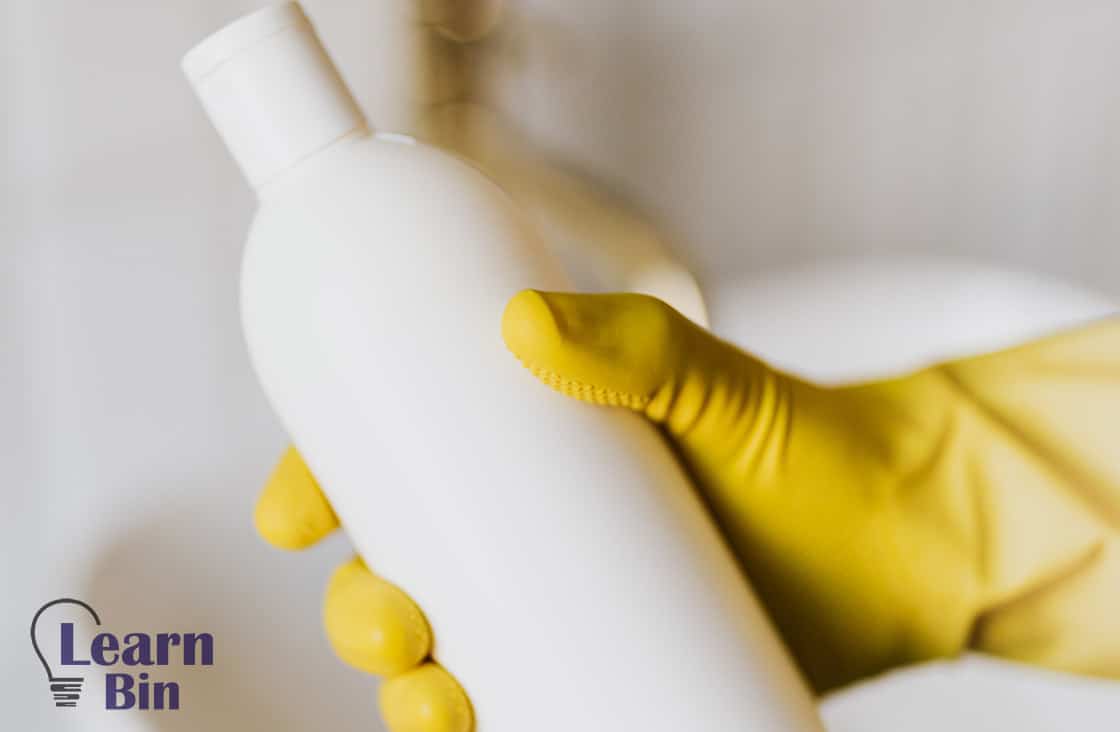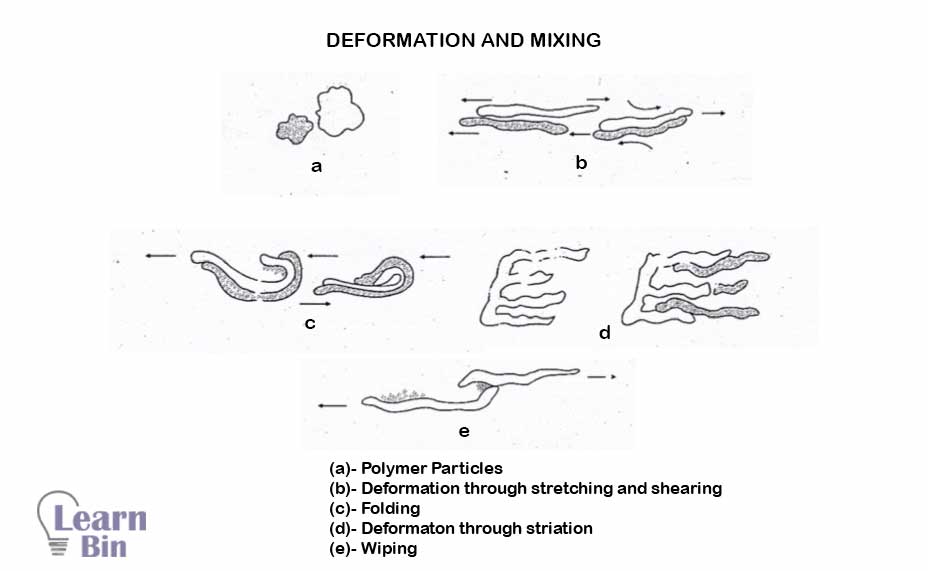More results...


In order to manufacture a plastic product (plastic production process), there are two main processing steps that have to be done. The first step is the synthesis of the polymer. This process is included in the polymerization process and chemical engineering process. Polymerization is done by using monomers, initiators, catalysts, etc.
Chemical engineering deals with the unit operations in which materials undergo a required change in composition, energy content, or physical state at a reasonable cost and in the safest possible manner.
The second step is the processing step which is done in order to get the final product. At the processing step, the synthesized polymer is subjected to deformation and allowed to be set in defined confinement. In plastic processing, there are various methods of production of articles by shaping.
| Deformation method | Examples |
| Deformation through melting | Extrusion Injection molding Calendaring Melt-spinning |
| Deformation in the rubbery state | Vacuum forming Pressure forming |
| Deformation by dissolution | Casting Slush molding Solution spinning |
| Deformation by dispersion | Latex processing Casting and dipped products. |
| Shaping through machining | Using lathe or milling machines |
| 3D printing | Small parts Characters or structures in 3D-animations |
At the processing, stage material undergoes mixing and compounding steps.
Mixing is bringing two or more components (mutually compatible or incompatible) into intimate contact. Shear force is applied to deform the material. Due to the sheer force, all the components distribute uniformly throughout the total volume to make the mass homogeneous with regard to the compositions of the basic components.
Compounding is also a mixing, but at the compounding step, ingredients are mixed in a specific proportion as per requirement, i.e. mixing the ingredients as per recipe or formulation.
Deformation takes place resulting increase in the interfacial area between components. In the process actions, smearing, folding stretching, wiping, compression and shearing take place simultaneously. As a result of these process actions, components flatten out into thin layers and striated. So, the surface area is increased. Surfaces are smeared with ingredients and smeared ingredients wiped onto a second surface.
Two striated layers come in contact and when they are folded smeared materials sandwich inside folds. The continuation of the process increases contact between components and increases homogeneity. If a small sample of the compound has the same proportion of the component of the whole mass, the compound is perfectly mixed.

Mixing and Compounding processes are done by using specific machines. Those are generally called blenders. There are a variety of blenders available in the industry. Some of them are for special feeding materials. The basic selection criteria for a blender are the quality of the product manufactured and the Ease with which one can be cleaned. The selection of blenders is directly affecting the quality of the product.
Secondary points of selecting a blender are Residence time, Heat generation, and Whether the equipment suits to process the particular plastic. Residence time is the time duration which occupies to complete the processing. If residence time is low, that means the efficiency is high.
Heat generation is occurred due to the conversion of mechanical energy into heat. In a jacketed system, heat generation is high. If heat generation is high, that means high energy should be supplied to the particular machine. It is economically drawback.
Before selecting a blender, it should check whether the equipment suits to process the particular plastic. It depends on the type of feed and processing characteristics of the material. There are some important characteristics of thermoplastics that should be considered.
Those characteristics are Hygroscopicity, Size, and shape of the feed granules, Thermal properties, Flow properties or rheology, Crystalline properties, Orientation, and shrinkage.
Hygroscopicity is the ability of a substance to attract and hold water molecules from the surrounding environment. This moisture is very difficult to remove when absorb to the mass. A disadvantage of hygroscopicity is moisture turns to steam during the high-temperature processing and creates “Mica marks” or/and “Silver streaks” These marks are visible in the final product.
By a low-temperature drying surface, moisture can be removed. The level of moisture allowed depends on the processing temperature.
| Plastic | Processing temperature (℃) | Allowed moisture level |
| Cellulose acetate | < 1800 | < 0.30% |
| Polycarbonate | < 3000 | < 0.02% |
Granules which are also known as plastic pellets are tiny pieces of plastic that are fed to the blender as raw material. In the blender, plastic pellets are melted and mixed with other additives. The time of melting differs with the size of the granules. Small pellets will be easily melted and large pellets take much time to be melted.
So, when melting large pellets, small pellets that have been already melted can degrade. So, uniform size is essential, not an average value. To obtain uniform granule size polymers are granulated in special granulators.

In order to mix properly, granules should be melted. Polymers which are having high specific heat should be supplied with high energy to melt. For the melting process, heat should be supplied externally or generated internally. Generally, polymers are not conductive materials.
So, some polymers need external heat to be melted. This process is called “external heating”. External heat is given by using steam or boiling water from the outside of the machine.
Internal heat is built up due to the viscosity of the polymer melt. As an example, in the injection molding process when rotating a screw in the barrel, it will apply friction and generate heat. This is called “internal heating.
When supplying heat, the stability of the polymer should be considered. Because at high temperatures polymers tend to degrade. On the other hand, some end products of polymer degradation may be toxic to the user or to the machine.
After processing at the melt stage, the end product is cooled to room temperature. The polymer morphology of the final product is depending on the rate of cooling. The fast cooling process results in an amorphous polymer. Because due to the fast cooling, there is no time for polymer chains to be arranged certain order. So, the polymer chains arrange as they were. This results in amorphous polymer morphology.
Slow cooling results in a crystalline polymer. Because due to the slow cooling process, there is much time for polymer chains to be arranged in order well. That means a crystalline polymer is formed.
Rate of cooling of a polymer from.
Crystallized polymers are formed due to slow cooling. There is a high amount of packing in crystalline materials. So, these materials have high density and high shrinkage compared to an amorphous polymer. Crystalline materials have a high modulus. When a material has a high modulus as well as crystalline structure the tries to brittle easily.
During the process, polymer chains are subjected to intense stress. So, molecules align along the direction of the stress and stretch in the same direction. At the end of the process, thermal stress is removed. On the removal of thermal stress, chains begin to coil. On the cooling step, chains get closely compacted, and mass shrinks. Stretching gets reverted. Due to the shrinkage, the dimensions of the final product will be changed.
Polymer rheology is directly connected with the flowability of the material. Material with very high molecular weight such as UHMWPE has low flowability. Such materials cannot be processed by injection molding which is needed for high flowability.
